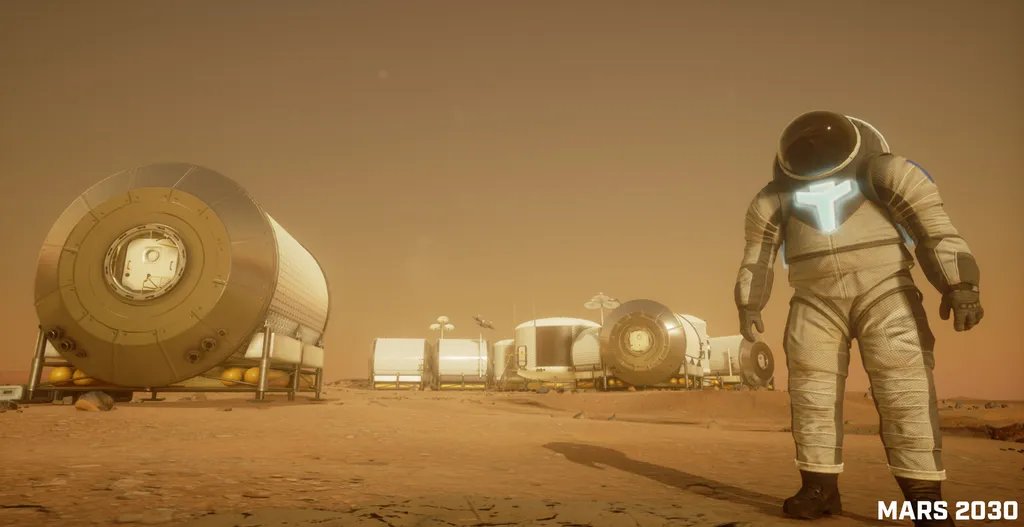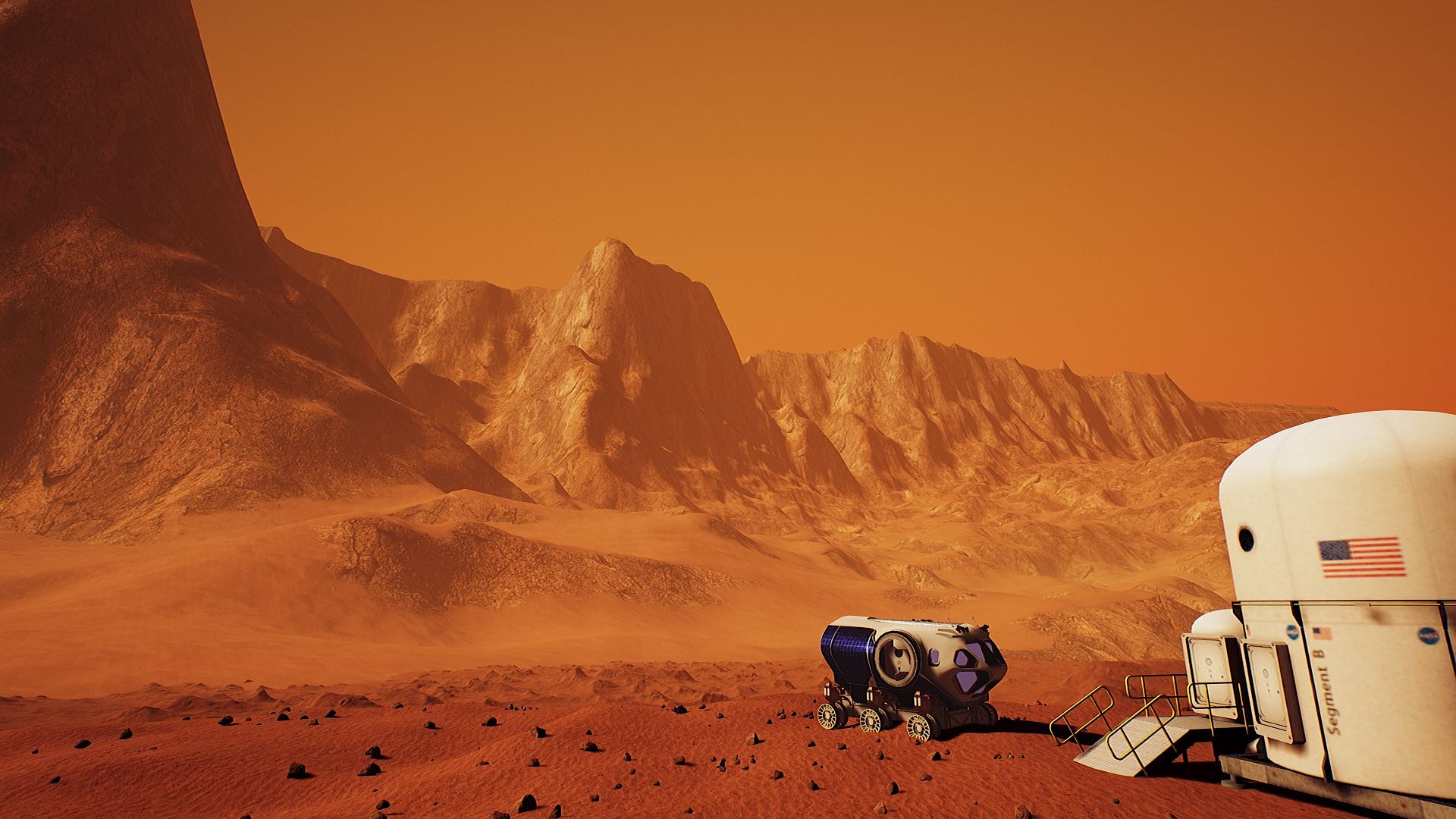The mission to Mars seemingly isn’t just the next frontier for space exploration, but also for VR. Game developers, 360 content makers and more are obsessed with the red planet, and NASA itself envisions a Mars landing in which users at home are able to join in, soaring above its surface and burrowing underground.
But it’s early days; Elon Musk’s space transport company, SpaceX, plans to launch a journey to Mars in 2024. Sadly, the same is true of an ambitious new VR experience named Mars 2030. I got to sample this project from multimedia company Fusion a few weeks back, but it was so early on in development I wasn’t exactly sure why I was seeing it.
Fusion has partnered with some big names to bring the planet, which is some 225 million km away, right into your living room. That includes NASA itself as well as the prestigious Massachusetts Institute of Technology’s Space Systems Laboratory. Not too long ago we also learned that Nvidia was helping to produce the piece. With partners like this and a gorgeous debut trailer available, you’d be right to expect big things of Mars 2030. And it will probably deliver come release, but it’s not really close to being ready for prime time right now.
In its defence, Fusion is already nailing the visual aspect of Mars 2030. When you pull on that headset (in this case an HTC Vive) you’ll find yourself gazing out across a barren landscape that stretches on for miles. Particularly impressive is the attention to detail paid to the layout of rocks. You don’t see identical clumps dotted about the landscape, but instead varying areas in which they’re spread thick and thin. Sometimes they’re found in tiny clusters and elsewhere they’re scattered. It feels alien, which is exactly what standing on another planet should be like.
But the piece falls apart in other areas right now. First of all, I’m walking around using the Vive’s trackpads rather than Room Scale and a Blink system. Granted some Vive owners will have to take this path, but showing it off in this way isn’t ideal. Tracking is also rough; my arms kept glitching and appearing in strange angles. I don’t want to press too hard on either of these points, as they may be specific to the demo and set up I saw, but they certainly detracted from the experience.
My main issue, however, was the lack of direction in the piece. Once I’d experienced the initial wow factor of taking another planet in there didn’t appear to be much point to the experience. You’re situated near a base camp with all kinds of interesting tech to look at, but that’s all you can do. Robots march around the site and are a delight to stop and watch, but they didn’t respond to my presence in any way. In fact I could walk right through them, as I could a number of objects.
There were also structures with doors, but I couldn’t take a look inside; steps led up to each entrance and every time I tried to ascend a set I’d just walk right through them. There’s no kind of vision blurring employed like you see in The Gallery to warn you that you’re standing somewhere you shouldn’t, and it creates a jarring atmosphere. You even begin holding a flag in your hands, but I seemingly wasn’t able to do anything with it.
It’s was possible to climb inside a buggy and drive around, however, which was fun to steer around. Hopefully Fusion is planning to bring these individual elements together to create an actual experience with some sort of progression; simply being dropped into a section of Mars isn’t going to cut it.
Add to all of this a complete lack of any kind of any kind of background noise and you have something that in its current form feels lifeless and uninspiring. Granted it’s not meant to be a cinematic masterpiece, but the result is currently unimmersive, leaving much to be desired. While it was hitting the right note on a visual front, the rest of the demo just left me fully aware that I was standing with a pair of goggles over my face.
You get the sense that Nvidia in particular is looking at Mars 2030 much in the same way it’s looking at the excellent EVEREST VR, taking it to events across the globe to demonstrate not only the power of VR but also the PC hardware that’s backing it. It’s a sound choice for such an experience, but it has some ways to go before it’s really ready for a spotlight.
But that’s the thing; I’m confident that Mars 2030 is going to get to that stage, it just shouldn’t have been shown off in this one. I look forward to stepping back into the experience when it’s truly ready to be shown off, but until then it shouldn’t make any more public appearances.






























